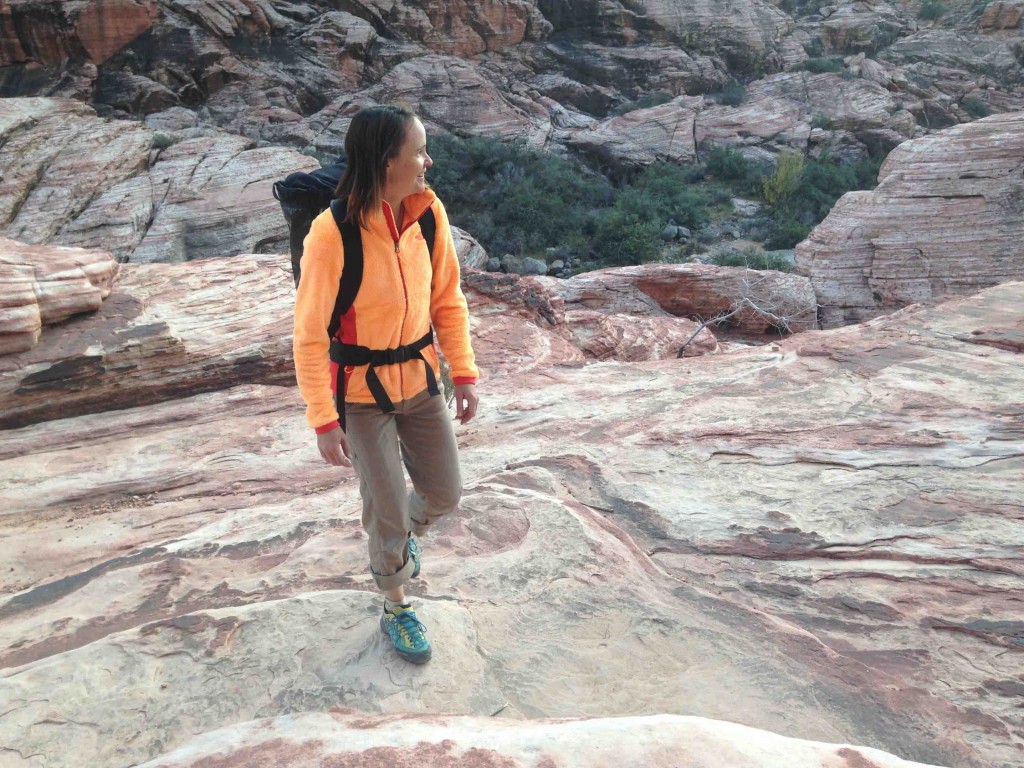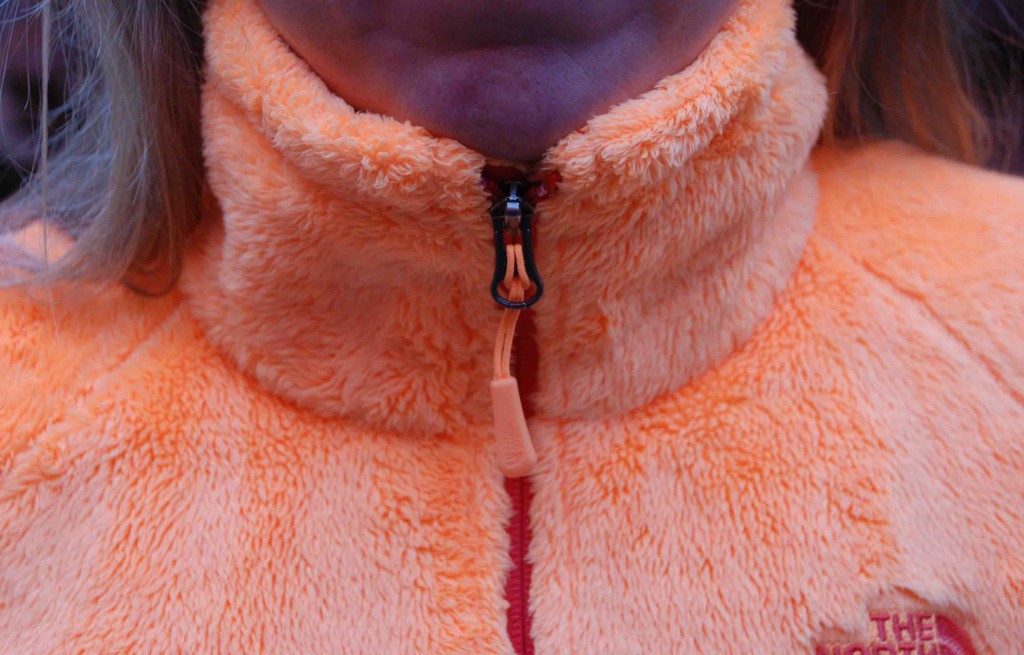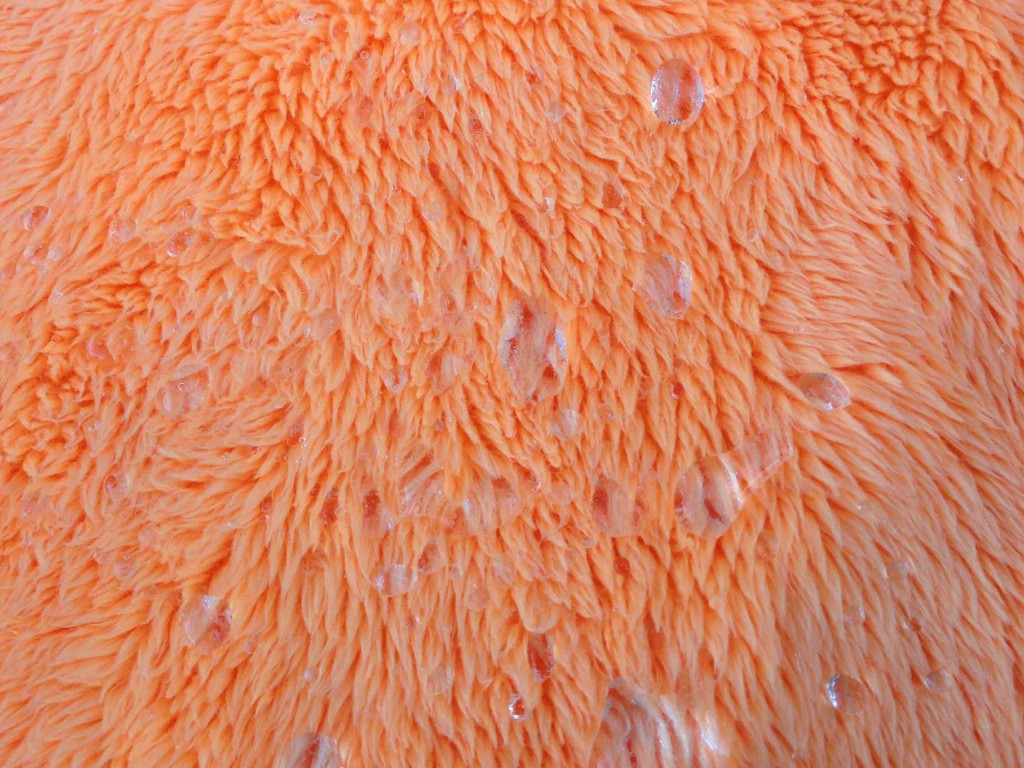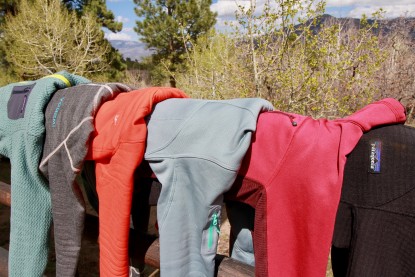The North Face Tech-Osito Jacket - Women's Review
Our Verdict
Our Analysis and Test Results
The North Face Tech-Osito Jacket is made with a 100% polyester silken, high pile raschel fleece in the main body with a weight of 315 g/m². The side stretch panels are made with 251 g/m² fleece (93% polyester, 7% elastane). The jacket has two hand warmer pockets and an oversized collar. It currently comes in Luminous Pink, TNF White, TNF Black, Starry Purple, Kokomo Green and Tofino Blue.
Performance Comparison
Warmth
This heavyweight jacket was one of the warmer models that we tested. When out climbing on a cold fall day at elevation, our testers were able to wear this jacket while standing still without another layer on top and still feel comfortable. In fact, a popular combo was climbing in the Patagonia R1 Hoody and then putting on the Tech-Osito afterwards to belay. When zipped up fully, the oversized collar completely protects your neck and adds to the warmth factor of this fleece.
Comfort
The North Face Tech-Osito Jacket is also exceptionally cozy — wearing this jacket feels like getting a hug from Elmo all day long. You will only want to wear a t-shirt or tank top under this fleece so you can really appreciate its texture and silken feel. The one drawback to the raschel fleece is that you might occasionally find little flakes of the fleece stuck on your base layer, particularly the first few times you wear it, so you may want to wash it once or twice first; that seemed to get the initial fuzzies off the jacket.
Breathability
Unlike some lightweight and more technical fleece jackets, like the Patagonia R1 Hoody, this jacket is not very breathable. Our testers definitely got sweaty while hiking with this piece on, though the side panels do help vent a little. This is the kind of layer that you want to put on after your hike or while lounging around the house, or for less strenuous winter snow sports where you need to stay extra warm.
Layering Ability
This jacket has a tailored fit but it is not cut as tight as the Patagonia R1 or R2 models, so there is room for layering underneath, either for a base layer and/or a light fleece. However, when trying to layer it under a jacket that already had some insulation (say for a very cold day on the ski hill) we did start to feel like a bit of a stuffed sausage with restricted movement in the arms. The side panels on the torso help to remove bulk, and if those panels extended down the arms like they do on the Patagonia R2, it would work better under an insulated jacket. This jacket fit best under a shell instead. This is also a great fleece to wear under a shell because it doesn't have a hood.
Ease of Movement
For the most part this jacket moved well, but the bulkier material meant that the range of movement in the shoulders was not as good as with a lighter fleece like the Patagonia R1 Hoody or the Marmot Flashpoint - Women's.
Wind Protection and Water Resistance
Like most of the other fleeces that we tested, this jacket does not do a great job of keeping the wind out. If that is a main consideration for you, then a fleece made with a “windstopper” fabric or “Hardface Technology,” like the Arc'teryx Fortrez Hoody - Women's, is a better choice. Likewise, there isn't a lot of water resistance happening with this fleece jacket either, though the pile is so thick that it would take a steady rain to saturate through the fleece. Water beaded up really well on the raschel strands and brushed off easily, leaving the fleece dry, for a time a least.
Style and Fit
The arms on The North Face Tech-Osito Jacket tend to run on the shorter side. This is something that we have noticed with a lot of TNF fleece models that we have tested over the years, with the exception of the Radium jacket. While the arms on this model were not as short as the Denali Jacket, they were still a little short on our main tester, who has long arms relative to her height. So if you have perfect sample size measurements then this might not concern you, but if you have any type of positive ape index (if the length of your arms extended from tip to tip is greater than your height), you will probably find the sleeves to be on the short side.
We found the cut of The North Face Tech-Osito Jacket flattering and the side panels go a long way to keeping the silhouette tailored even with such a heavyweight material. As for the style of the raschel fleece itself, it is certainly cozy and has a nice feel against the skin, but whether you like the look of it or not tends to be a matter of personal taste. Our main tester has another North Face jacket lined with raschel fleece and swears by its insulative and cozy qualities. However, wearing it as an outer layer might be another issue. Some of our testers found it to be a bit too Muppet-like, particularly in some of the brighter color options.
Best Applications
This is a great fleece jacket for layering under a shell in the winter and for wearing around town as a jacket on cooler fall days.
Value
At $99, The North Face Tech-Osito Jacket is reasonably priced compared to some of the more expensive technical fleeces out there. In fact, it's half the price of the Arc'teryx Fortrez Hoody. Considering that you can use it both as a jacket and an insulating layer, you will probably get a lot of use out of this fleece relative to its price, and this is why it won our Best Buy award.
Conclusion
Like it or not, it seems that the Muppet fleece invasion is here to stay — and for good reason. Raschel fleece jackets are warm, cozy and not prone to pilling like the older basic fleece fabrics. This jacket is a great update to the popular Osito 2 model, with a more stylish fit and cut. The side stretch panels add in breathabilty and reduce bulk where you don't want it, making it a good layer for under a shell jacket or as a standalone piece. If you are looking for a great jacket at a reasonable price, and want to be noticed wherever you go, then The North Face Tech-Osito Jacket is an excellent choice.












